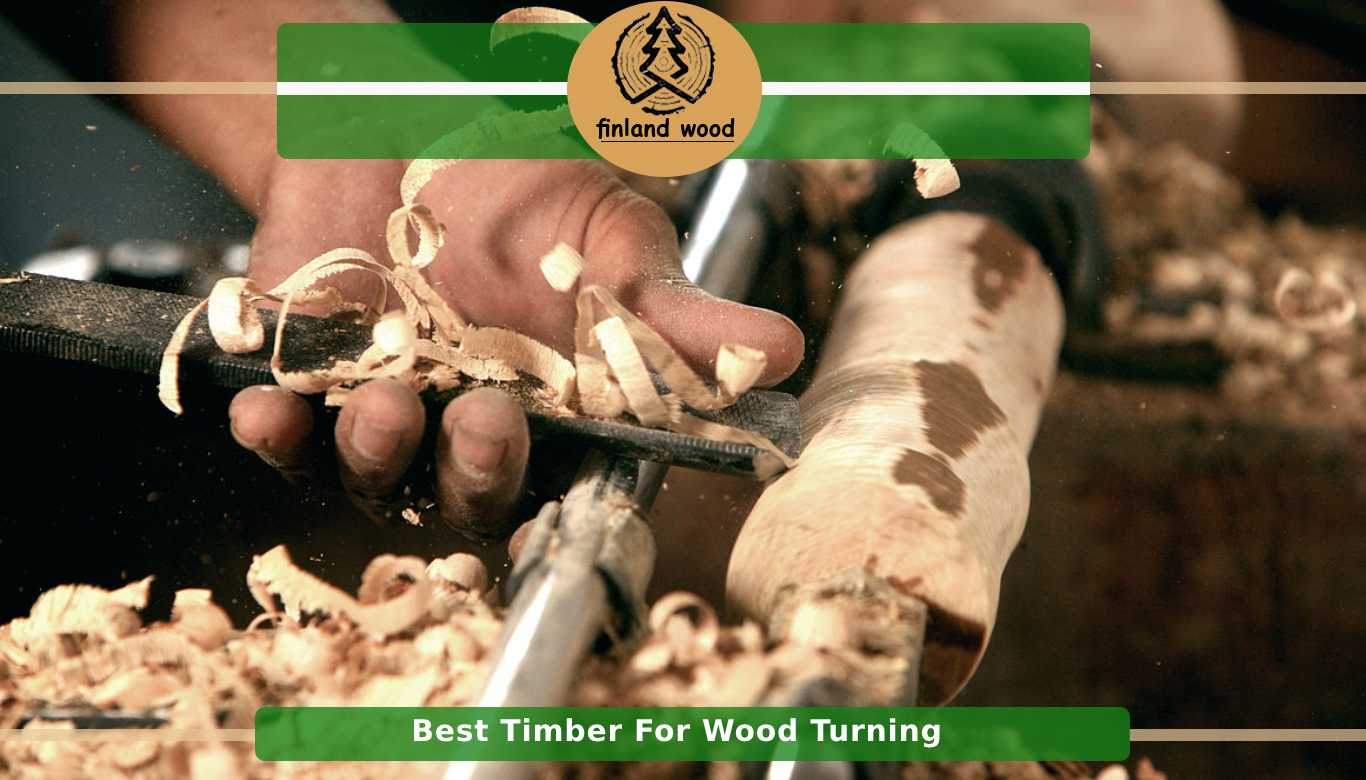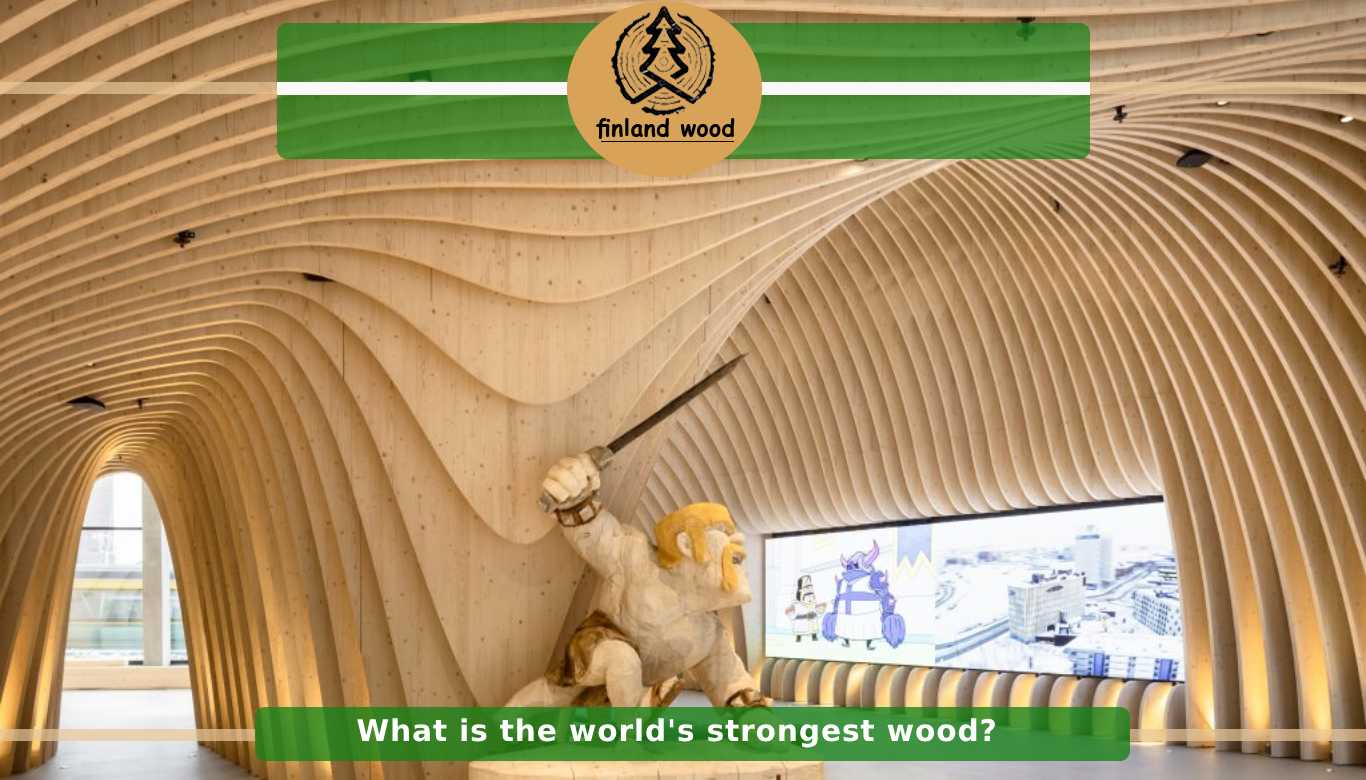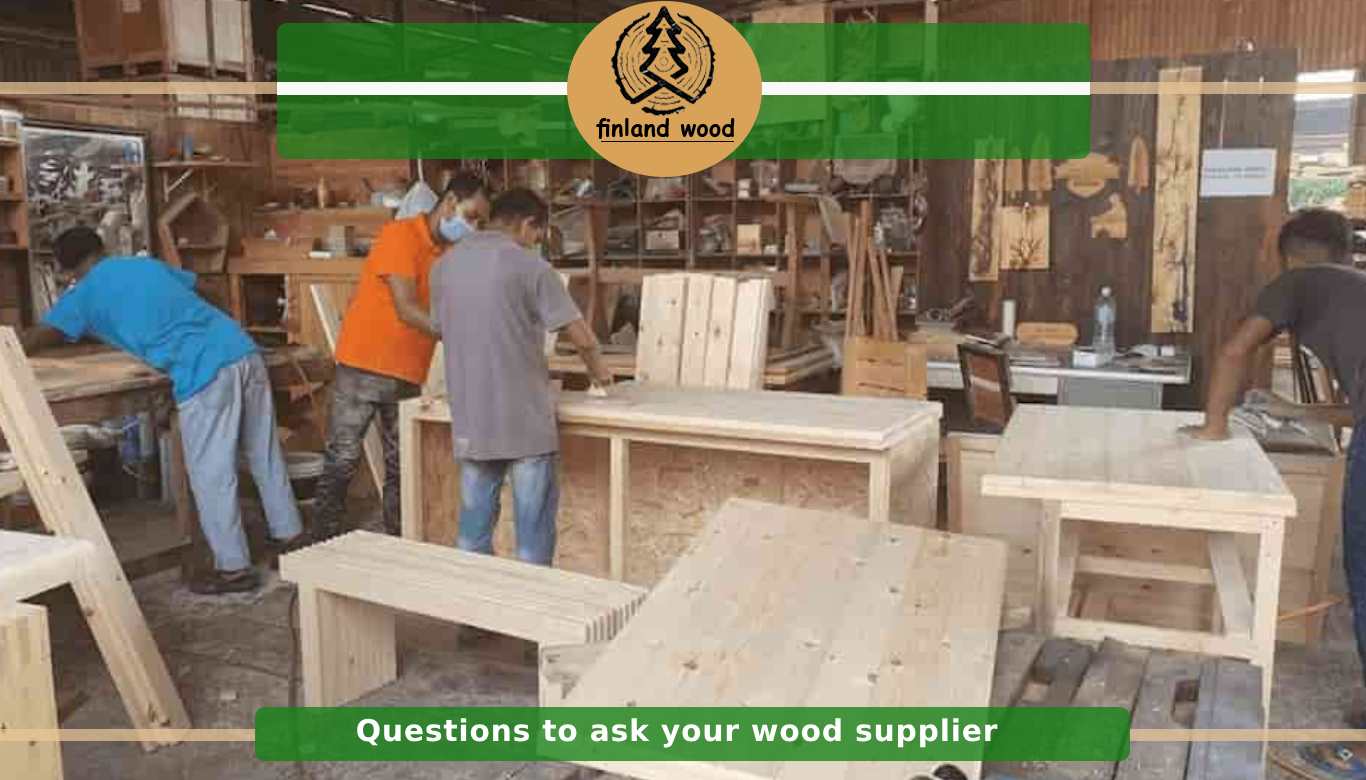To find the best wood for turning, we need to explore the characteristics of different types of timbers that are from popular trees and well-known species.
Several types of woods from trees like oak, beech, cedar, mahogany, and holly are among best natural resources for producing timbers.
They are considered as sustainable resources for hardwood harvesting in natural forests.
But, softwoods like elm, birch, and poplar are also available in market. they are considered as softer types of woods that can be turned into several items. But, they need more care to prevent possible tears in the turning process.
It worth mentioning that for wood turning, you need to have minimum required skills. Also, you have to be familiar with the techniques and learn how to use sharp tools.
In this article, we’re going to have a look at the main characteristics of the woods and timbers that are harvested from most popular trees. we’ll tell you whether they can be used for wood turning or not:
Types of Wood for Beginner Woodworkers
Understanding the basic properties of wood for beginner woodworkers is of fundamental importance in the field of woodworking. Each type of wood has its own unique characteristics that dictate which woodworking techniques and tools are used for processing wood on a lathe. Therefore, individuals new to woodturning must definitely increase their knowledge. We will explain to you which type of wood is suitable for beginner woodturners.
the best wood for turning
When it comes to woodturning, there are many types of wood that can be used, each with its own characteristics and advantages. The choice of the best wood for turning depends on factors such as the desired outcome, personal preference, and availability. However, here are some popular types of wood that are often favored by woodturners:
- Maple: Maple wood is a dense and durable hardwood with a smooth grain that turns well on a lathe. It is known for its light color and can feature beautiful figure patterns. Hard maple (such as sugar maple) is often preferred for its density and strength.
- Ash: Ash wood is a strong and relatively lightweight hardwood. It has a pronounced grain pattern and turns easily. Ash is available in both white and black varieties, with white ash being more commonly used in woodturning.
- Walnut: Walnut wood is a dark hardwood that turns beautifully and polishes well. It has a rich, deep color and can exhibit interesting grain patterns. Black walnut is particularly prized for its aesthetic appeal.
- Cherry: Cherry wood has a warm, reddish-brown color that deepens over time. It turns smoothly and can have an attractive grain with occasional dark streaks. Cherry is a softer hardwood, so sharp tools are essential for clean cuts.
- Mahogany: Mahogany is a tropical hardwood known for its rich, reddish-brown color and straight grain. It turns well and has a smooth finish when properly worked. Genuine mahogany and African mahogany are commonly used in woodturning.
- Oak: Oak is a strong and durable hardwood that turns easily. It has a distinctive grain pattern and can feature medullary rays, which add visual interest. White oak and red oak are both used in woodturning, with white oak being more commonly turned due to its finer texture.
- Beech: Beech is a light-colored hardwood with a fine, even texture. It turns well and is relatively easy to work with. Beech is popular for spindle work and is often used for items like tool handles and kitchenware.
read more: Pine vs Maple
These are just a few examples, and there are many other woods suitable for turning, such as birch, hickory, and padauk. It’s important to consider factors like hardness, grain pattern, and availability when choosing the best wood for your specific project. Additionally, always ensure that the wood you select is properly seasoned and free from defects before turning.
Is oak suitable for woodturning?
Oak wood is hard and durable enough to last for years. They can resist scratches and wear.
Several species of oak are among popular sources of wood and timber production.
Especially, Red and white oak are very important for wood harvesting and supplying the demands in the furniture industry.
Due to its coloring, red oak has a relatively higher price. For this reason, some turners believe that to lower the costs of production, white oak is a better option.
They both offer natural patterns and can hold stains. If you use oak wood for cabinet or flooring, it will really add a nice touch to your decoration.
Several popular items that can be turned by oak wood are:
- Tables
- Chairs
- Banisters
- Bowls
- Spindles
read more: Wooden Vs Metal Furniture
Are conifer species good for woodturning?
Conifer is a well-known term that is used to refer to several well-known species of trees. these species have pine cones and are similar in their main characteristics.
But, when it comes to woodturning, as conifer trees are diverse, it is not easy to say if it is ok to use all of them for woodturning or not.
For example, popular varieties of conifer trees are:
- Pine wood
- Spruce
- Cedar
- Cypress wood
- Junipers
Handling and properties like hardness and softness of timbers and woods from each tree is not the same. Therefore, they have different applications.
where to use them?
Even softness can create problems; spruce can be used for making beautiful furniture or headboards.
But, keep in mind: spruce wood has a sappy and softwood. So, it has to be turned with sharp tools.
Cypress or sequoia are not as soft as spruce. So, they are better for making items like cabinets and tables.
Can we use pine for woodturning?
In wood turning, pine and spruce show similar characteristics. They both have a sappy and soft nature.
But, for making decorative items, using pine wood will result in products with good varnish. Especially, when you finish them.
As a beginner, who wants to learn about wood turning, pine is one of the best timbers for turners who want to develop their skills.
For example, beginners can use it for making bowls with beautiful designs.
Is ash good for woodturning?
This tree has several varieties. They are different in their color and range from white to blue, olive, and finally black varieties.
The olive type can resemble the texture of olive tree. Therefore, you can use it for making decorative items such as:
- Carved pieces
- Handles
But, black ash is the most notable well-known commercial variety. After black ash, the white variety is more popular and ranks second.
But, white ash is more expensive and harder. Also, it doesn’t have the ribboning of the black ash. So, white ash is not as popular as the black variety.
Keep in mind: As black ash is resistant to shock and won’t shatter easily, it is a popular type of wood for baseball bats.
Woodturning with birch
As a natural timber with light coloring, birch is a nice and perfect source for wood harvesting to be used in small projects. You can use birch timber for woodturning and to make items such as:
- Banisters
- Bowls
- Candlesticks
- Coasters
As birch has unique patterns and a lovely color, it is also used for veneers.
It is easier to use birch for woodturning. Because birch is softer than other varieties in its nature.
But, this softness can lead the wood to tear when it is used for turning. Therefore, birch is a better option for applications that are not exposed to tear and wear. For example, we do not recommend birch for outdoor furniture.
Can we use elm for woodturning?
As a natural wood that has both soft and hard varieties, elm can also be used for woodturning.
But, soft varieties have more pores. It is worth mentioning that American, Red, and Wych elm are among the soft varieties. Which one is more popular?
Definitely, hard varieties are more popular for woodturning. But, as they don’t have nice patterns, you’ll not have nice bowls after wood turning by hard varieties.
Instead of wooden bowls, they are good for making items like:
- Chairs
- Tables
- Outdoor furniture
Keep in mind that elm has a distinct smell. This means that it’s not recommended for making indoor furniture.
Is willow popular for wood turning?
We have several varieties of willow with different colors. Black and white are the commonly known species in the market.
As you know, willow needs wet conditions to grow and constant water is a must for its thriving.
White willow is harder than that to be used for wood turning. Also, it doesn’t dry well.
Like with species, black willow is very wet. But, it’s less difficult to use it for woodturning. Therefore, you can use it for small projects.
So, for making bowls and decorative purposes, black willow can be a good option. But, not for applications like making furniture
Can I use Holly for wood turning?
It is considered a popular type of wood for turning. As it has a milky color and good texture, holly can be perfect for woodturning applications.
But, holly is plain and tends to turn blue after drying. Therefore, you need to dry them in batches and to use stain when finished.
So, even it’s a hardwood, before wood turning, you should allow it to dry. Also, avoid warping in final products.
where to use Hollywood?
Some use holly wood for making decorative items for furniture or to make handles and brooms.
Chairs made by holly wood are also beautiful. Just we have to repeat that and make sure to dry them well and avoid warping.
Where to use poplar for woodturning
The most commonly used type of poplar tree is lily poplar. Other species are less common.
It is worth mentioning that this tree grows tall and straight. Also, it is a popular choice for making plywood.
Poplar has industrial applications. One of the main reasons for its popularity is its distinctive ribboning and coloring.
Keep in mind: as poplar tears easily and is soft, to turn it, you need sharpened tools.
But, as a whole, even it can be turned, but we do not recommend poplar wood for turning.
Is cedar excellent for turning?
Both the with and red varieties of cedar trees have a good scent and nice grains. Therefore, cedar wood is highly prized for wood turning.
Especially, when you learn about the rot-resistant properties of cedar timber.
Furthermore, due to the iconic scent of cedar wood, it is a pest resistant type of wood.
To deter bugs, many turners make furniture and containers with wood that are harvested from cedar trees.
Keep in mind: that white cedar is easier to work with. Because it’s softer than red cedar. It turns and finishes well. But, it cannot hold screws and nails very well.
Also, remember that the silica in red varieties can cause damage to the tools. But, the red timbers also can be turned very well.
read more: Pine vs Cedar
Is beech wood good for turning?
As a very hard wood, beech timber is very good for turning. But, the hardness of wood makes it difficult to turn and even can cause breaking.
Also, be careful not to sand it too high. As it can scratch the wood surface.
What can we make with beech wood and timber?
- Cabinet
- Table
- Chair
- Cooking utensil
- Cutting board
As a durable and hardwood, many turners prefer to use beech rather than softer species.
Is basswood good for turning?
It is a soft and light wood that is suitable for making items like storage containers.
Basswood holds glue very well and for this reason, some of the best wooden items that are turned by using it are picture frames, food storages, and carved designs.
But, when you want to turn it or hold the stain, irregular grains of basswood can create a bit of a problem.
Is hawthorn wood suitable for woodturning?
It is a type of hardwood with creamy color and even grains. You can use hawthorn wood for making items like:
- Carved items
- Cabinets
- Bowls
But, the important note is that hawthorn does not have perfect rot resistance properties. So, for several applications like making outdoor furniture, it’s better to use other types of woods that are resistant to rot and infestation.
It worth mentioning that hawthorn will not grow very large. In other word, many species are considered as shrubs rather than trees.
So, even cabinets and items made by hawthorn are very lovely, but their industrial use is limited.
Is mahogany perfect for wood turning?
In the past, the Cuban variety of mahogany was used for making expensive furniture. This wood has a high quality and rich texture.
With its rich and yellow color and lovely grain, Cuban mahogany is perfect. But, it’s rare and very expensive.
So, new varieties with the same texture like Honduras mahogany are more popular these days.
They turn very well and are perfect for making furniture. But still, the availability and the price of mahogany is a great barrier for its wide application for wood turning.
Final thought
In this article, we introduced several popular species and discussed their use in wood turning.
Remember, the art of wood turning for making fashioning items needs to find best type of soft or hardwoods and timbers. For this reason, many beginners are looking for the best timbers for wood turning.
As, each type of wood has its own unique color, texture, and mechanical characteristics, to make wooden pieces, try to compare and choose the best varieties!









zanjo
To carve and make beautiful wooden objects, I use soft woods such as oak, walnut, or longneck. These woods allow me to create fine details and more complex designs because of their soft, machinable structure. Also Soft woods are well suited for painting and finishing.
minasa
So far I have experimented with hard woods like teak or leather and these woods are great for structural turning and creating strong and durable pieces. They are usually highly resistant to scratches and impact and are great for making furniture and projects that need strength. , they fit. Because these woods are stiff, they may be more time-consuming to turn, but the end result is worth the time and effort.